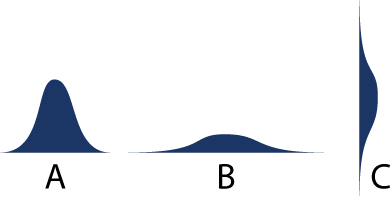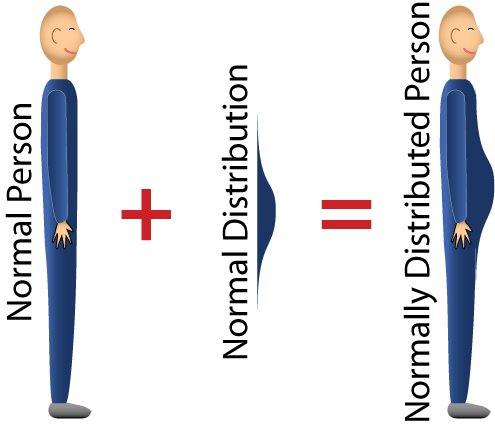- The Ultimate Weight Loss Plan
-
by Tom Rogers
- The Problem
- Having found myself in my 60th year, Iíve suddenly become painfully aware that my midsection is a whole lot fatter than my wallet. It's not that I failed to notice these things before, it's just that they never bubbled to the top of my to-do list. In my own nerdy way, I was too busy saving the world, to notice that my personal world could use a little saving. Even though the eyes don't focus as well as they used to, there's something about the 60th year that focuses the mind on the image in the mirror. It struck me: of all the things in the world in need of improvement most were out of my control, however, my midsection wasn't one of them. This would be the goal of my 60th year, come up with a systematic approach for midsection improvement, follow it, increase my sigma (see below) and fatten my wallet by writing a best-seller about the experience--well at least increase my sigma..
Like most problems in life the solution can be stated in a sentence: eat less exercise more. The implementation, however, is a bit more complex.
- Terminology--Gaining Sigma
- First a few words about terminology. I use the term normally-distributed rather than fat because it's much more dignified, not to mention mathematical (I am after all a techno-nerd) As shown in figure 1, a normal distribution can have A) a tall peak or B) a short peak. It can C) be turned on it's side. What is the difference between the tall peak and short peak? The short peak has a larger standard deviation, often represented by the Greek symbol σ (sigma), but more on that in a moment.
- Turn the normal distribution on it's side, add it to a normal person and he becomes a normally distributed person--a much nicer way to say fat. What's more, it eliminates the horrendous terminology of losing weight. Why would anyone want to lose something that took nearly 60 years and a lot of money to acquire?
With the new terminology, as people grow thinner, they increase their standard deviation. Instead of losing weight, one gains sigma. It's like gaining, health, wealth, and beauty , well at least figuratively.

Figure 1: Various normal distributions
- .
- The Perfect Diet Plan
- The perfect diet plan would have rules that must be followed to the letter, and while this might seem unpopular, on some level people actually like rules. Furthermore, when they inevitably break the rules and make no progress, they blame themselves rather than the diet plan. To make a plan work, a person must believe in it.
- For the sake of credibility, these rules would have some type of scientific basis, at least a scientific sounding basis. One rule would need to be outrageous sounding such as, eat as much as you want.
- We all know that to lose weight a person has to consume fewer calories than are burned in daily activities. So, ultimately, a diet plan must cause one to eat less, at least in terms of calories. Hence, the rules would ultimately need to impose limitations on calorie input albeit in a sneaky manner.
- How about this? The cardboard diet: scientifically proven to result in dramatic weight loss, eat as much as you want, as long as it's cardboard. Hmmm...well maybe not. The perfect diet needs some flavor.
- The Science of Eating
- Food provides the energy to keep us alive and, like it or not, we're biologically designed to eat more than our momentary needs and store it in our bodies. Otherwise, we'd be doomed to continuous munching. When food is readily available we're especially bad about over-eating. We automatically gorge ourselves in order to build enough long term storage to make it through times when food is scarce.

Figure 2: definition of normally distributed person
- Ultimately, overeating is prevented by a conscious decision to stop. On the other hand, we do have a built in warning system to prevent overeating. There are limits on just how fast we can digest our food and if we try to exceed them we end up with all kinds of nasty short term problems. Unfortunately, the warning system has a time delay. If we consume food too quickly we can overeat beyond the comfort level before we get the alarm. The answer is to slow the rate of consumption.
Eating is not just about getting energy. It's a complex sensory and social experience that involves taste, smell, vision, touch and even sound--crunchiness for example. We want to prolong it, and this alone can act as a distraction causing us to ignore the signs we should stop. The good news is we can prolong the pleasant sensations and still reduce calorie intake by eating smaller bites with a little more time between them. This gives our brain the chance to get, process, and react to the stop-eating message in a timely manner.
Finally, we have to consider the first law of consumption, the only principle of economics for which no one has yet found an exception. Simply put, it says that for any product people want to consume, if the opportunity cost is lowered, people will consume more. Conversely, anything that makes the opportunity cost higher will cause a decrease in consumption. Food is not an exception. Make it more difficult to eat and the amount eaten will be reduced.
- The Solution
- The solution can be stated in a single word: chopsticks. When was the last time you saw an obese Asian, one actually born and raised in Asia? It could be their diet, genetics, culture, wealth or any number of factors, but it could also be their chopsticks. Chopsticks reduce not just the bite size but also the rate of food consumption. Okay, maybe there are at least a hundred million Chinese who can eat faster with chopsticks than the best spoon and fork guy, but a typical American raised with only a spoon and fork cannot.
Returning to the first law of demand, for the average American, eating with chop sticks makes eating more difficult, hence, increases the opportunity cost of food consumption and, remember, an increase in opportunity cost will result in a decrease in consumption.
What about Sumos? Certainly they qualify as normally-distributed Asians. Alright, yes, there are some normally-distributed Asians but they aren't nearly as commonplace as normally-distributed Americans. As for Sumos, they are the exception that proves the rule. First, they demonstrate that Asians can indeed become normally-distributed and second, they demonstrate the evils of eating with a spoon. Sumos attain their gigantic girth by using spoons to eat huge quantities of a special stew washed down with beer.
| Finally, a diet you can
stick to!
|
||
- Chop stick diet rules are simple:
- Eat as much as you want of anything you want as long as it's put in your mouth by chopsticks. This applies even to hot dogs, hamburgers, and various finger foods. If you eat potato chips, chocolates, or nuts they must be put in your mouth with chopsticks.
- Sugar-rich, alcoholic or high calorie drinks are to be restricted to no more than 12 ounces per day. This includes most fruit juices, soups, and sweet tea. Carbonated drinks filled with high calorie sweeteners such as high fructose corn syrup are banned.
|
The Rules Needless to say, forks and spoons are forbidden but not knives. Why knives? If the food is properly prepared it will be chopped into less-than-bite-sized chunks, the smaller the better. Remember, the purpose of the diet is to slow the rate of consumption and make eating slightly more challenging thereby reducing consumption. And there you have it: the ultimate diet plan, the Chopstick Dietô. It's the one diet anyone can stick to. (It also has the best puns.) |
Copyright © 2009 T. K. Rogers, all rights reserved

